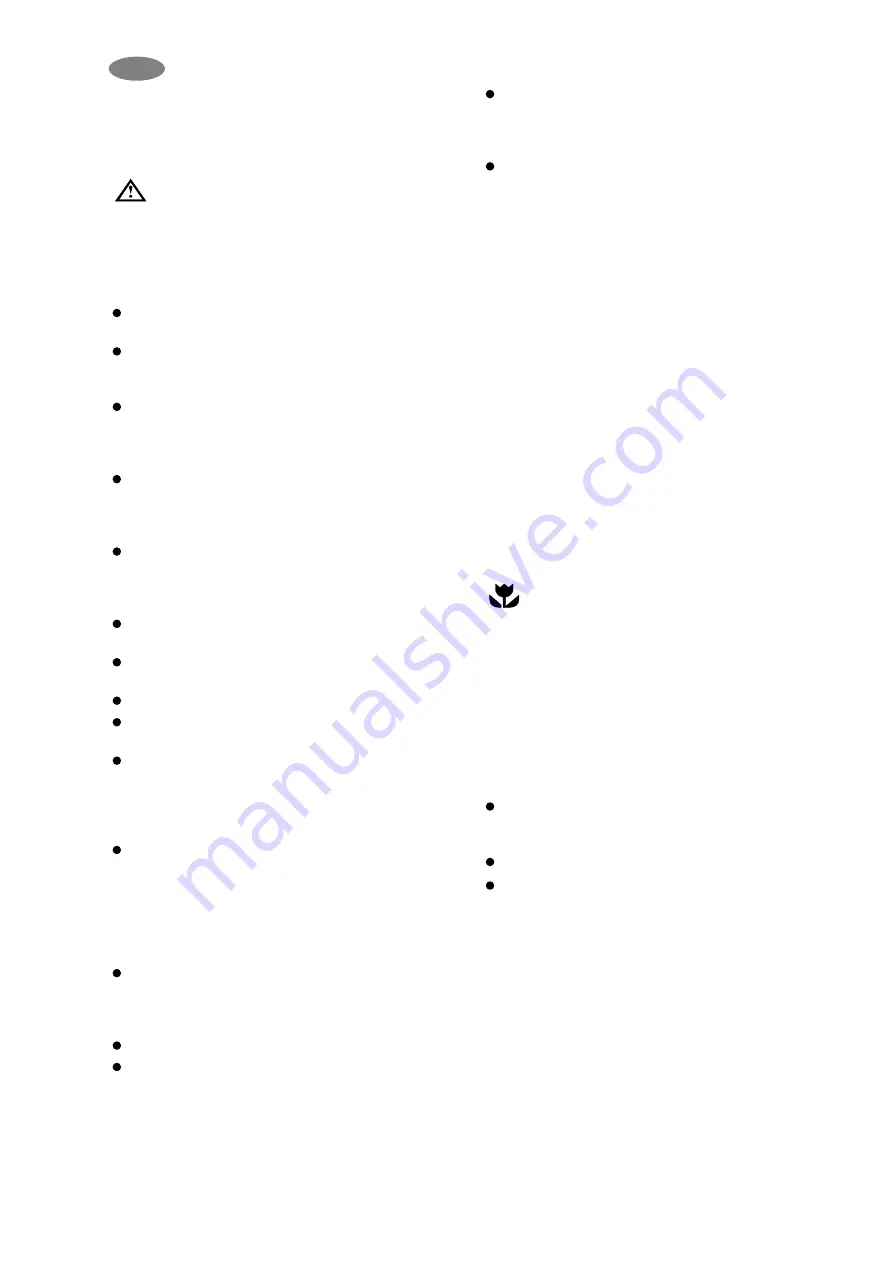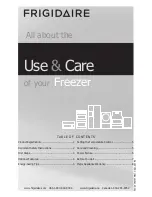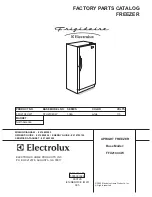
12
GB
SAFETY INSTRUCTIONS
WARNINGS AND GUIDELINES
These warnings are provided to improve safety, and should
be read carefully before installing or using your freezer.
IMPORTANT
It is vital that these instructions are kept with the
freezer for future use. If the freezer is sold or given to
another user, or if you move and leave the freezer
behind, you must ensure that the instructions
accompany the freezer to enable the next user to use
the freezer correctly and read the relevant warnings.
This freezer is only intended for the freezing and
storage of food.
This freezer should only be operated by adults.
Children must not be allowed to tamper with the
control buttons or play with the freezer.
Changes in the electrical mains system in connection
with the installation of this freezer should always be
carried out by an authorised electrician or competent
person.
Do not under any circumstances attempt to repair the
freezer yourself. Repairs carried out by untrained
people may result in personal injury or serious
malfunction of the freezer.
Service of the freezer should be carried out by an
authorised service company, and only original spare
parts should be used. See under Guarantee
Conditions and Service.
It is dangerous to alter the freezer specifications, or
to change the freezer in any other way.
Make sure that the freezer is not placed on top of the
mains cable.
Do not re-freeze food once it has been defrosted.
Observe the recommendations for storage carefully.
See under Helpful Hints.
This freezer includes components that are heated
during operation. Consequently, adequate ventilation
must always be provided. If ventilation is insufficient
defects may occur, resulting in the loss of food. See
under Installation.
The inside of the freezer contains pipes through which
coolant flows. If these pipes are punctured the freezer
may be damaged beyond repair, and food may be lost.
Do not use sharp implements to remove frost or ice.
Frost can be removed using the enclosed scraper. Do
not knock ice off the sides of the freezer, but remove it
by defrosting the freezer. See under Maintenance.
Do not place drinks in the freezer. Bottles and cans
containing carbonic acid or sparkling drinks are
particularly prone to explosion, which may damage
the freezer.
This freezer is heavy. Take care when moving it.
If the freezer is fitted with a lock to prevent tampering
by children, the key must always be kept safely out of
the reach of children, and far away from the freezer.
Before disposing of an old freezer, make sure that the
lock (if present) no longer works. This is to prevent
accidents and avoid the danger of children getting
locked inside.
Ice lollies can cause frostbite if eaten direct from the
freezer.
Make sure that the power plug is not squashed or
damaged by the back of the fridge/freezer.
-
A damaged power plug may overheat and cause a fire.
Do not place heavy articles or the fridge/freezer
itself on the power cord.
-
There is a risk of a short circuit and fire.
Do not remove the power cord by pulling on its lead,
particularly when the fridge/freezer is being pulled
out of its niche.
-
Damage to the cord may cause a short-circuit, fire
and/or electric shock.
-
If the power cord is damaged, it must be replaced by
a certified service agent or qualified service
personnel.
If the power plug socket is loose, do not insert the
power plug.
-
There is a risk of electric shock or fire.
IN THE INTERESTS OF THE
ENVIRONMENT:
When disposing of your old fridge, freezer or
fridge/freezer:
Check with your local Council or Environmental Health
Officer to see if there are facilities in your area for collecting
the gas from the appliance for recycling. This will help reduce
the amount of CFC gas released into the atmosphere.
Help to keep your country tidy - when disposing of an old
appliance or a CFC free appliance use an authorised
disposal site.
INSTALLATION
POSITION (1)
Place the freezer horizontally on a firm surface, resting on
all four plastic feet. Use a wooden block or similar object
to compensate for any bumps/holes in the surface.
The room should be dry and adequately ventilated.
Temperatures of the external environment have an
impact on the energy consumption of the device.
Therefore:
-
do not put the device to a place exposed to sunshine
ore besides a radiator or oven,
-
put it to a place where the temperature of the
environment corresponds to the climatic
classification for which the device was designed.
Climatic classification Ambient temperature limits
SN
from +10 to +32°C
N
from +16 to +32°C
ST
from +18 to +38°C
T
from +18 to +43°C
Summary of Contents for ZKC220AP
Page 2: ...2 1 5 2 7 6 3 8 4 1 2 3 4 FREEZING CAPACITY 5...
Page 3: ...3 10 11 9...




























